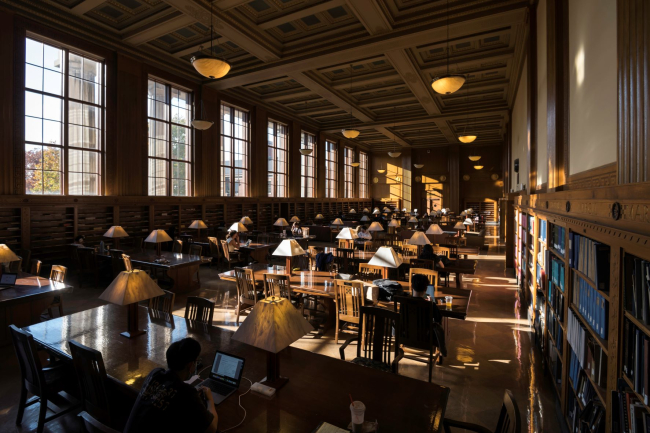
Meliora is more than a motto, set of values, or work ethic at the University of Rochester. It’s also the people who live, apply, and realize it. Students are an excellent example.
One of the ways Rochester’s undergraduate students manifest Meliora is through their research. Whether prompted by their coursework or personal interests, they consistently challenge the status quo and push beyond boundaries to uncover new truths, perpetuate innovative thought, and imagine ways to make the world ever better. And the Friends of the University of Rochester Libraries (FURL) are here for it.
Since 2014, FURL has fanned the flames of student curiosity with the Undergraduate Research Initiative Award. The annual award recognizes excellence in the early stages of undergraduate research and is typically given to students working on their senior thesis or a capstone or independent research project. FURL received 15 applications this year, predominantly from students pursuing degrees in the social sciences and humanities, a reversal from last year, which mostly saw applicants from engineering and natural sciences disciplines.
“It demonstrates the broad appeal of the program,” says Udo Fehn, chair of the RIA committee and professor emeritus of earth and environmental sciences at Rochester, about the applicants. “All of them were very high quality. The winners impressed us with their approach to intriguing topics. It was clear they had found their topics on their own and had strong interactions with [their professors and subject librarians].”
Applications for the 2023 award are due November 17.
For the 2022 awards, FURL recognized one first- ($1000), one second- ($750), and two third-place ($500) winners.
FIRST PLACE
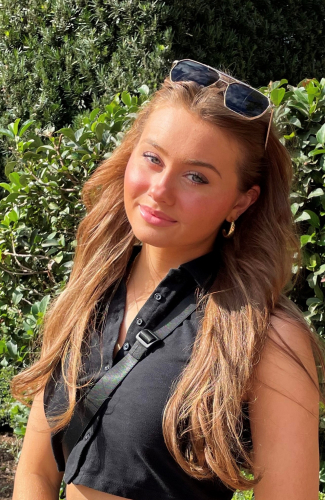
Penelope Sergi ʼ23 | Woman of Letters: The Life of the First Female Printer in America
Project summary: In 1738, Elizabeth Timothy buried her husband, Lewis, printer of the South Carolina Gazette. Because her husband still had a year left in his contract with Benjamin Franklin (yes, that Benjamin Franklin), she was in an unlikely and unprecedented position. Newly widowed, pregnant, and a mother of six, Timothy became the gazette’s new printer. This project seeks to expand on Timothy’s story as an influential pre-Revolutionary figure and America’s first woman publisher.
SERGI, an English and history major, had been struggling to find a research topic for the class “Ben Franklin’s America” when Michael Jarvis, associate professor of history, offhandedly mentioned Elizabeth Timothy. She wrote the name down and went back to the lecture. When she returned to Timothy and began reading her story, the narrative immediately started taking shape in her head.
With the help of Lara Nicosia, a humanities librarian for the River Campus Libraries (RCL), Sergi has worked to give Timothy’s life and work proper historical context. For example, sources often credit Timothy’s son, Peter, as the printer in the years following her husband’s death. Sergi is also intent on reading all issues of the South Carolina Gazette to understand why stories were printed and how the content changed under Elizabeth.
Going into the application process, Sergi was sure she wouldn’t win, presuming the honor would be claimed by a STEM student. “This was kind of validating,” she says. “To me, history is like a science, but it’s also like an art. And that’s why I really enjoy it; it can be a lot of things all at once.”
Sergi looks to blend history and art after graduation, perhaps following in the footsteps of authors such as Laura Hillenbrand or Erik Larson.
“I’m a big creative writer,” she says, noting that writing about history comes easily to her. “I’ve been looking at a lot of publishing jobs and internships. I need to be surrounded by books and narratives, whether they’re historical or fictional.”
SECOND PLACE
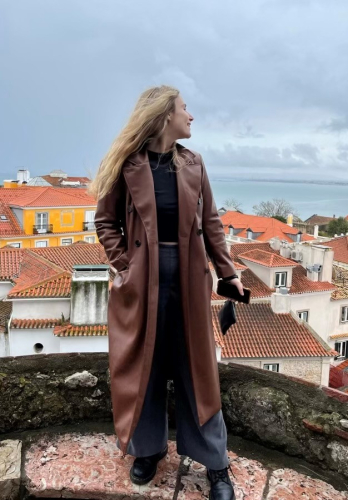
Samantha Becker ʼ23 | The Impact of Religion on Bermudian Politics and National Identity
Project summary: Historically, Christianity has played a significant role in Bermuda’s political landscape. Many Bermudians feel that the semi-autonomous territory is still greatly influenced by religion, despite a significant decrease in observance and church attendance. Through an analysis of the African Methodist Episcopal Church—one of the largest denominations in Bermuda—and the Anglican Church of Bermuda, this project investigates how the intersection of race and class has an impact on religious and political institutions as well as Bermuda’s national identity.
BECKER, an English literature and anthropology major, has always been interested in religion. Last summer, she was in search of an opportunity to spend time abroad, hoping to conduct original ethnographic research for he honors thesis in anthropology. She was referred to Jarvis, the director of the Smiths Island Archeology Project in Bermuda, a perfect opportunity given that the country is among the leaders in having the most churches per square mile.
Becker worked out an arrangement where she would spend half the week working as a research assistant on the Smiths Island dig and the other half on mainland Bermuda, conducting interviews, attending church services, and observing the culture. Although she didn’t intend to explore race, class, or politics, that’s where the conversations took her. Among the larger takeaways she noted is a desire to break away from the United Kingdom, one that is mixed with a fear that sovereignty would only lead to Bermudians falling under the influence of the United States.
“This research project pushed me academically and personally,” she says. “I have come away with a profound appreciation for a culture and people that are grossly underrepresented in academia.”
As she considers her post-graduation path, a PhD in anthropology is a distinct possibility. However, she’s leaning toward pursuing a degree in civil litigation or international law.
THIRD PLACE
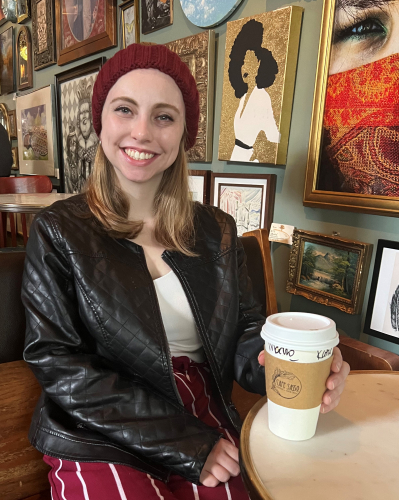
Katie Hurwitz ʼ23 | A Study of Child-Directed and Child-Created Music in Early Elementary School Pedagogy
Project summary: This project explores the intersection of music, poetry, and education. By comparing music written for and created by children to child-directed music, which includes analyses of the commonalities within the musical and textual features of child-directed music, the research looks to answer questions like “What kind of music should be taught to children?” and “What kind of music do children most identify with?”
HURWITZ is majoring in music with a focus on music in world cultures, but she also created a creative writing and world literature major through the Multidisciplinary Studies Center. She found the spark for her research in a 2020 class with Matthew BaileyShea, a professor of music in the Arthur Satz Department of Music at Rochester, in which she learned about his research in music and poetry.
Guided by BaileyShea and Pauline Schwartzman, a humanities librarian for the RCL, Hurwitz focused her exploration into child-directed music on lullabies and play songs, including how they’re contextualized for children from six to nine years old in music and general classrooms and other Western educational settings. She also plans to look closely at the kinds of music children create when instructed to “make a song” with students at the ROCmusic Collaborative, Strong National Museum of Play, and Rochester-area elementary schools.
Among the project’s goals is a better understanding of how a child’s experiences, social interactions, current emotional state, and level of musical training influence the songs they create.
Next year, Hurwitz will begin an accelerated master’s program for education at the University's Warner School of Education and Human Development, where she’ll study elementary education, teaching English as a second language, and reading and literacies. She’s also likely to dive into more research.
“I have a lot of academic interests and so many ideas for research,” she says. “But I really want to share my interest in the arts with children in some globalized way. I’m also really interested in translated children’s literature. So, I’m also considering writing bilingual or multilingual children’s books.”
THIRD PLACE
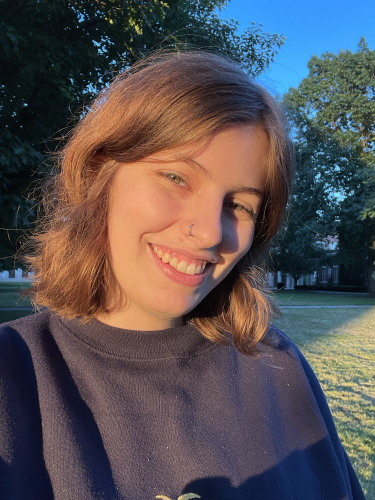
Ariel Hirschhorn ʼ23 (T5) | In Full Color: Race and the Development of Kodak Color Film
Project summary: Centered on the Kodak Historical Collection held in Rochester’s Department of Rare Books, Special Collections, and Preservation (RBSCP), the project investigates the connection between color film and race. More specially, by studying developments in subtractive color film technology and company correspondence, the project examines whether racist business practices and decisions at Eastman Kodak are responsible for the color in photographs being less accurate for people with darker skin tones.
HIRSCHHORN was working on their final project for their photography class last spring when they asked their brother, Sam, and his girlfriend, Lucillia, to pose for portraits. What should have been a slam dunk photoshoot—a cloudless sky at golden hour—turned out to be a bit of a headache. Sam, who is white, was overexposed in every photo. When Hirschhorn adjusted the exposure, Lucillia, who is Black, ended up underexposed.
As a computer science major and photographer, Hirschhorn wondered if the problem was their Sony camera and if other cameras had similar issues. That led to the more worrisome thought that America’s roots in racism may be responsible for inequitable designs in photographic technology. Arjay Romanowski, a STEM librarian at the RCL, recommended she consult Erin Fisher, a special collections librarian at RBSCP.
Before diving into the Kodak Historical Collection in RBSCP, Hirschhorn gave theirself a crash course in the history of skin tone on film. With the help of Stephanie Frontz, art, dance, and visual and cultural studies librarian at RCL, they poured through various news articles and journals. They also looked into Kodak’s relationship with the City of Rochester, including the company's employees of color, which led to the discovery of racist policies and hiring practices.
Hirschhorn still has many questions and is digging deeper into primary sources. (They have looked through maybe a third of the material in the Kodak collection held by RBSCP.) Within their application for this award, they noted that they hope to put the funding to use in an independent research project on race and film technology. So, in a sense, the recognition was an endorsement.
“It was really exciting because it means they want to know more about what’s in the archives,” they say. “Erin Fisher, who has been the most amazing resource, said there’s so much we still don’t know about the collection, and I’m hoping my award will encourage other students to continue looking through it.” ∎
If you have any questions about this award or the application process, please contact Kim Osur, development manager for the River Campus Libraries.
Enjoy reading about the University of Rochester Libraries? Subscribe to Tower Talk.

